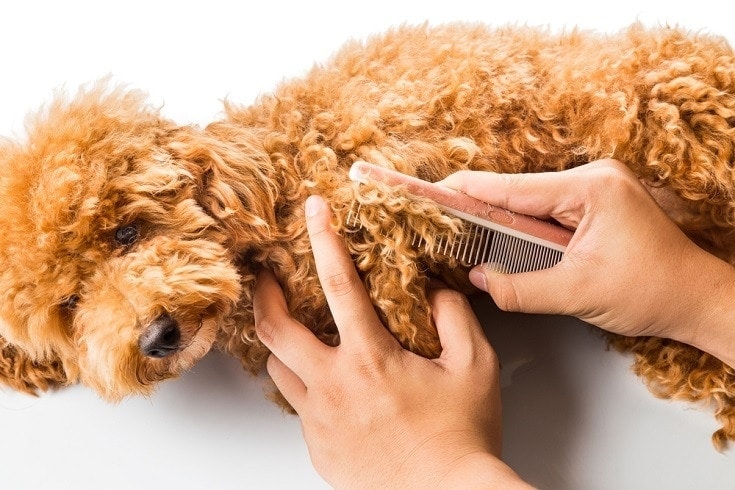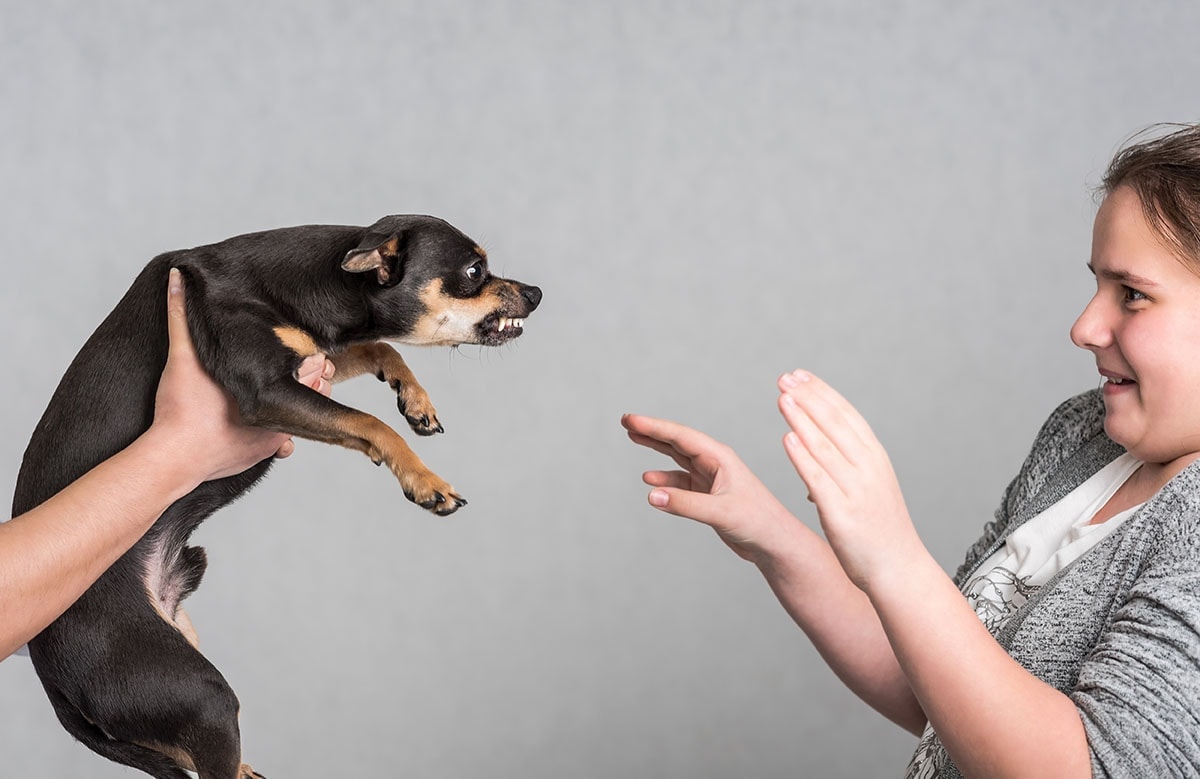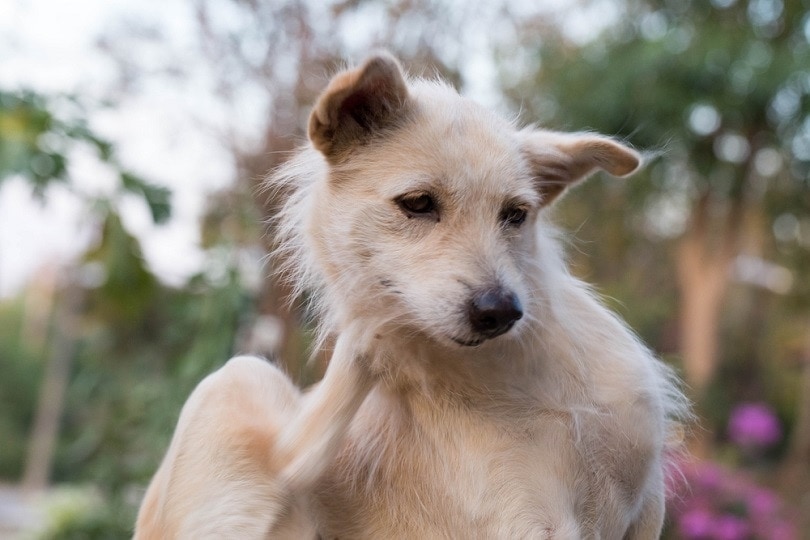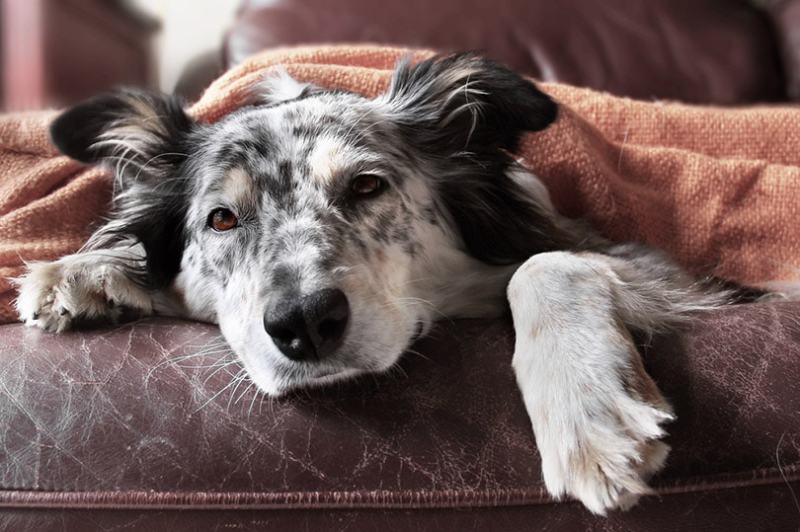Rhodesian vs Thai Ridgeback: Notable Differences (With Pictures)

By Misty Layne
Updated on
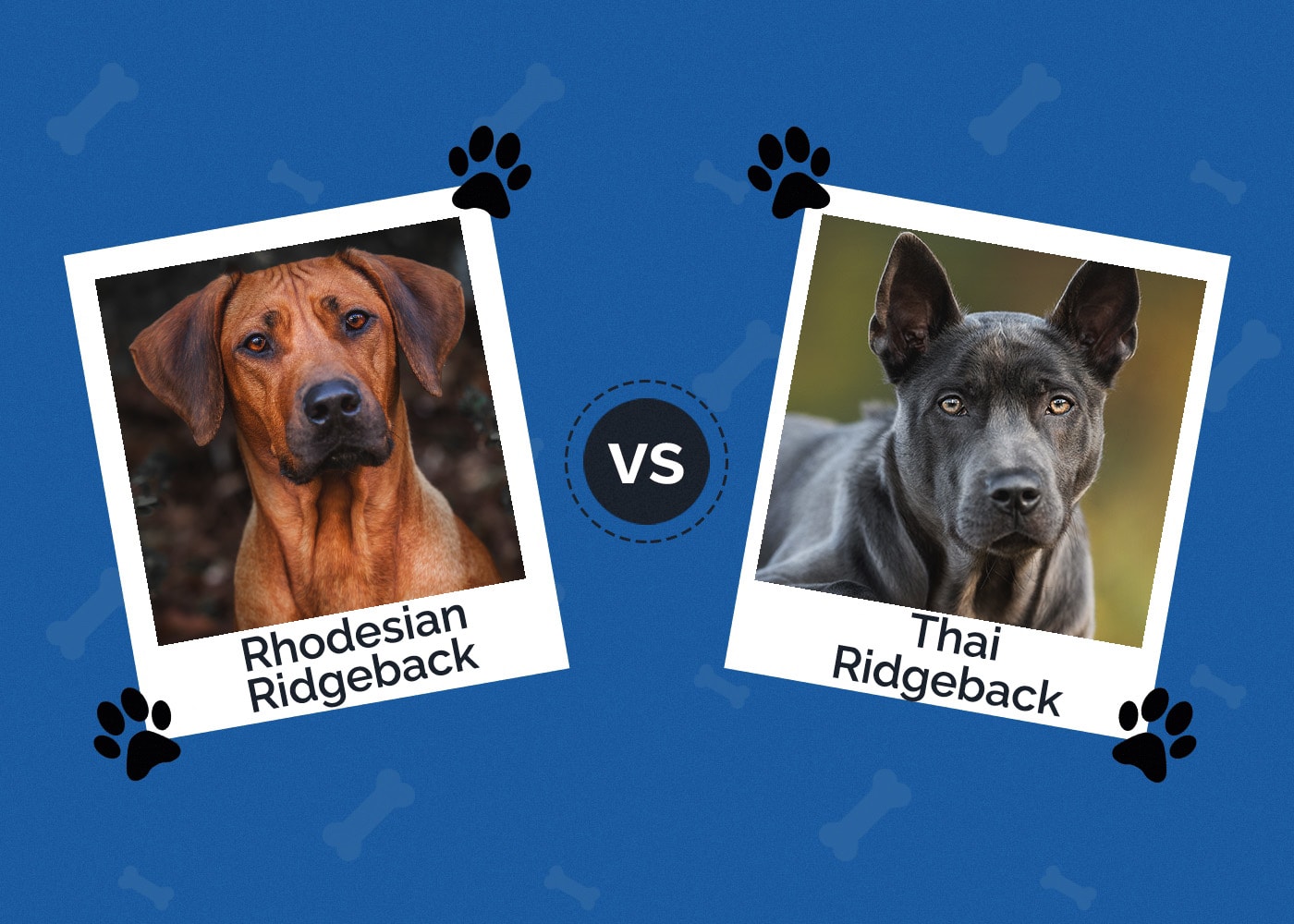
Often when trying to decide which dog breed to adopt, you’ll run across two that look and seem so similar you aren’t sure if there are any differences between them. Such is the case with the Rhodesian Ridgeback and the Thai Ridgeback. Both of these dogs get their name due to the backward-growing stripe of fur they have going down their backs, which makes them look quite alike. But how do the breeds actually compare?
While both Ridgebacks do have similarities, there are also some important differences between the two dogs (particularly when it comes to training them!). If you’ve been eyeing these breeds as potential new pets, you’ll want to be aware of how they compare. Keep reading to learn about both dog breeds, so you can make the best-informed decision!
Visual Differences
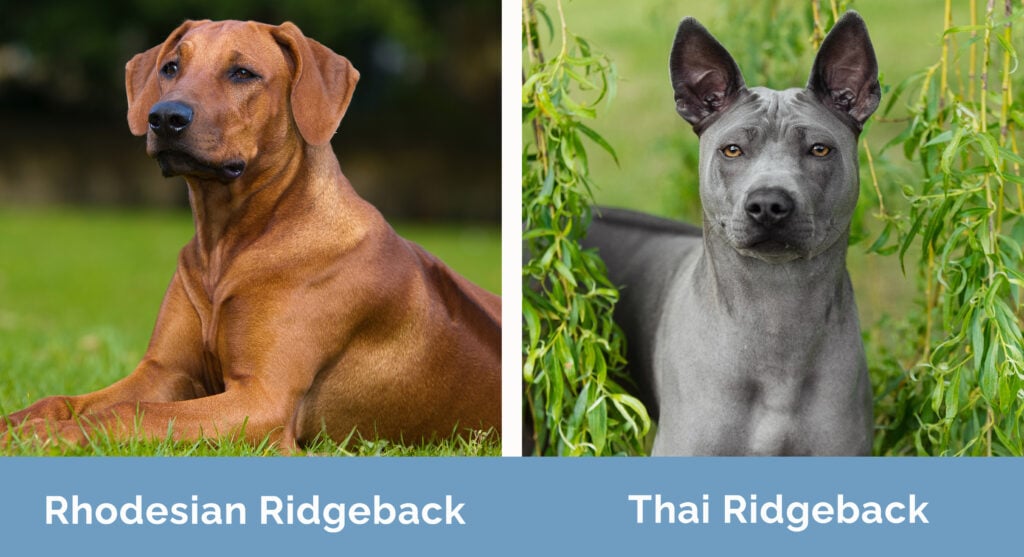
At a Glance
- Average height (adult): 24–27 inches
- Average weight (adult): 70–85 pounds
- Lifespan: 10–12 years
- Exercise: 1 hour a day
- Grooming needs: Minimal
- Family-friendly: Yes, with older kids
- Other pet-friendly: Often
- Trainability: Stubborn, loyal, fearless
- Average height (adult): 20–24 inches
- Average weight (adult): 35–75 pounds
- Lifespan: 10–13 years
- Exercise: 1+ hours a day
- Grooming needs: Minimal
- Family-friendly: Can be, but not with younger kids
- Other pet-friendly: Sometimes
- Trainability: Intelligent, stubborn, mind of its own
 Rhodesian Ridgeback
Rhodesian Ridgeback
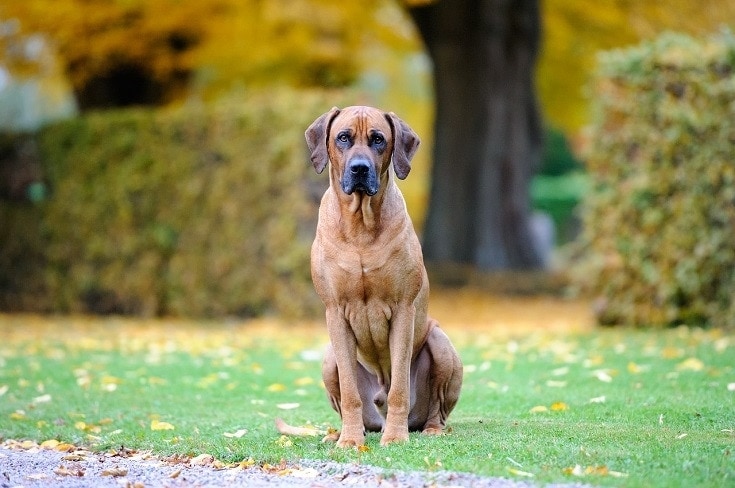
The Rhodesian Ridgeback, otherwise known as the African Lion Hound and the Renaissance Hound, came to us via Dutch immigrants in Africa. These immigrants, the Boers, wanted to breed a high-quality hunting dog that would be able to adapt to African climates. Hence, they crossed the Khoikhoi dog (a native of the country) with several European breeds, such as Terriers and Greyhounds. These pups weren’t just hunting regular game, though; at one point, they were used as lion hunters!
During the tail end of the 19th century, big-game hunter Cornelius van Rooyen was introduced to the dogs by a missionary. He decided to breed the African Lion Hounds with Greyhound-esque dogs that had ridges on their backs. And it was from these dogs that we get today’s Rhodesian Ridgebacks.
These pups are easy to pick out of a line-up due to the backward-growing ridge on their back. The Rhodesian Ridgeback can do just about any job you train it for, including hunting and guarding. They can also make excellent pets for families with older children.
Personality
The Rhodesian Ridgeback is well known for its even temperament. These pups are strong but also graceful and extremely gentle, particularly when playing with children. However, these dogs do have a stubborn streak, so you’ll need to be firm with them!
They are also highly intelligent, incredibly fearless, and exceptionally loyal. And though they can be aggressive towards animals and people they don’t know if they’re not properly socialized, these pups are sweet and affectionate with their families.
Training
As we said, the Rhodesian Ridgeback can be one stubborn pup, so it’s vital that you begin training them from a very early age. Experience with dogs helps when it comes to training the Rhodesian Ridgeback, so if you’re a first-time dog owner, you might want to find a professional trainer to help you out.
However, if you are training your dog yourself, remember to reinforce the idea that you are the leader of your little pack. Also helpful to know is that these pups are extremely food-motivated, so using training treats is a good idea.
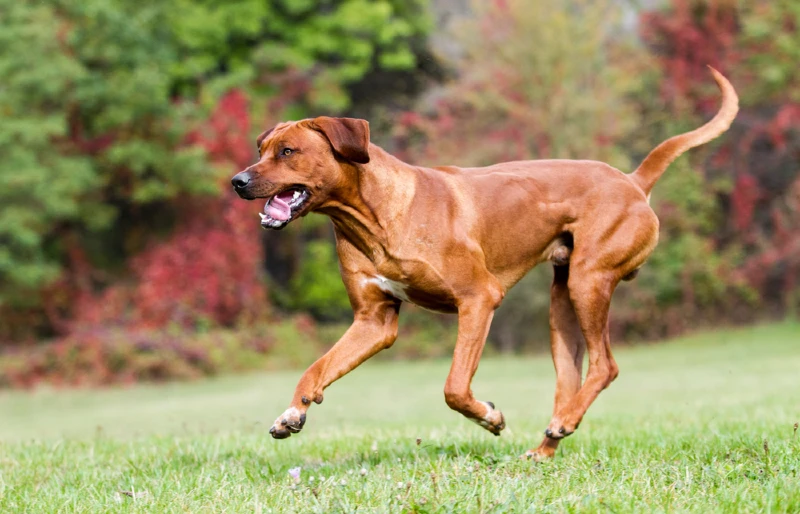
Health & Care
While the Rhodesian Ridgeback is a fairly hardy breed, there will be a handful of conditions they are prone to getting. These include:
Suitable For:
The Rhodesian Ridgeback can make a wonderful family dog as it can be quite gentle with kids. However, these dogs will do best in families with older children. Though the pups are gentle, they’re still quite large and powerful, and they could end up accidentally knocking over a small child. These dogs will also do better as indoor pets instead of outdoor ones, as they’ll want to keep an eye on their people to protect them, so ensure you have enough space for that if you’re considering the breed.
This dog breed can do well with other pets as long as they’ve been properly socialized from a young age. While you shouldn’t have many issues when it comes to other dogs, it’s advisable to watch your Rhodesian Ridgeback with smaller animals, such as cats. This breed has a high prey drive, so until it learns that smaller pets aren’t food, you won’t want to leave them alone together.
Thai Ridgeback
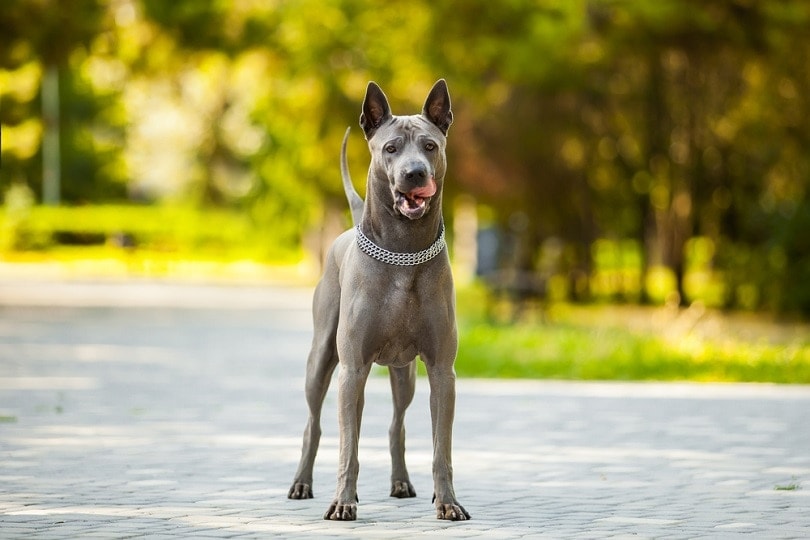
As the name suggests, the Thai Ridgeback came from Thailand. Dating back to at least the 1600s, these dogs were mainly used as hunting dogs and were likely descendants of the Funan Ridgeback Dog (which has been around in Southeast Asia for at least a thousand years). Also known as Mah Thai Lang Ahn and Pariah Dogs, the Thai Ridgeback was used for hunting wild boars, rats, and cobras. They were also occasionally used as guard dogs or to pull carts. The breed didn’t show up in the States until 1994 and is still rare outside of Thailand.
Like the Rhodesian Ridgeback, the Thai Ridgeback also has a backward-growing strip of hair on its back that gives it its name.
Personality
The Thai Ridgeback is incredibly smart, super stubborn, and has a mind of its own. So, it isn’t the best breed for first-time dog owners, as you’ll need a very firm hand to keep these pups in line. However, with enough time and training, the Thai Ridgeback can make a wonderful pet for families.
Not only are they great at being guard dogs due to their protective instincts, but they’re highly athletic and adventurous. This means you can have a blast playing in the backyard or on that long hiking trip you’ve been planning. Once you become the Thai Ridgeback’s person, it will be intensely loyal to you (sometimes to the point of overprotectiveness, which results in aggression towards other people).
Training
Thai Ridgebacks can be challenging to train due to their independent nature and stubborn streaks, but training is essential with these dogs, so they are able to live among other animals and people. Not beginning training as soon as you get your pup could result in destructive or aggressive behavior as your dog gets older. You’ll want to set boundaries quickly so your Thai Ridgeback knows you’re in charge.
As we said, these pups are definitely not for first-time dog owners, particularly when it comes to training them. Even more experienced pet parents might have some difficulty when it comes to training a Thai Ridgeback. Luckily, you should be able to find a professional trainer who can lend a helping hand.
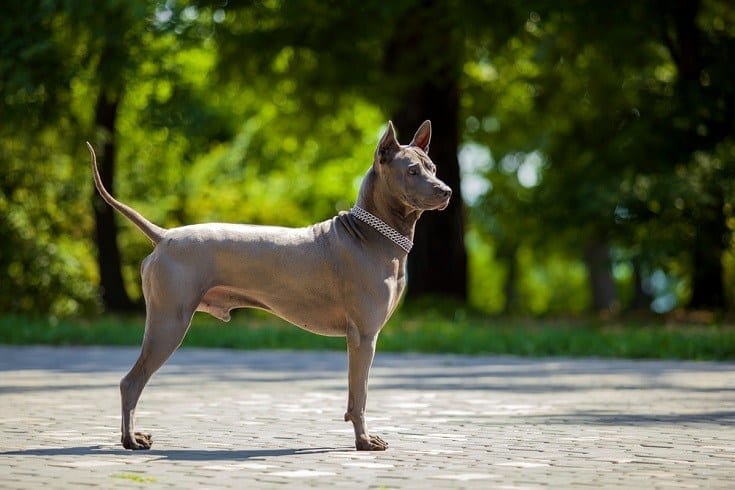
Health & Care
The Thai Ridgeback is even hardier than the Rhodesian Ridgeback. Though it may end up with an injury or two due to its active nature, there isn’t much it’s prone to when it comes to illnesses. A couple of problems to watch out for are:
Suitable For:
This breed is much less a family dog than the Rhodesian Ridgeback. While the Thai Ridgeback can do okay with kids who are older, having them around small children isn’t advisable as these dogs could cause injury (whether accidental or otherwise). And no matter who lives in your home, you won’t want to adopt one of these pups unless you have the time for intensive training and plenty of exercise.
Thai Ridgebacks can get along with other pets if socialized from day one. You’ll need to do slow introductions to any other animals in the house, as well as ensure no aggressive behavior has been occurring at the breeders before you bring your new pup home in the first place.
Which Breed Is Right for You?
Whether the Rhodesian Ridgeback or Thai Ridgeback is right for you depends largely on who is living in your home and how much time you have to devote to proper training and socialization of the dog.
Neither of these breeds will be suitable for homes with younger children, as they could accidentally injure them. However, both should be okay to be around older children—although the Rhodesian Ridgeback will be a better choice for kids, in general.
While both of these dogs require quite a bit of training, the Thai Ridgeback is the one that will require the most due to its stubborn, independent temperament. In fact, without the needed training and socialization, you could see serious behavioral problems with a Thai Ridgeback. So, consider that before making your decision.
Finally, the Rhodesian Ridgeback does better as an inside dog, so you’ll want to ensure you have enough room in your home if adopting one of these pups.
Related Reads:
- Rottweiler vs. Rhodesian Ridgeback: Key Differences (With Pictures)
- Rhodesian Ridgeback vs German Shepherd: The Key Differences (With Pictures)
Featured Image Credit: (L) nik174, Shutterstock | (R) Liudmila Bohush, Shutterstock

 Rhodesian Ridgeback
Rhodesian Ridgeback

